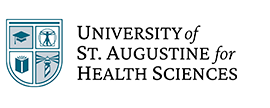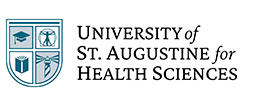Accelerated Learning
At USAHS, we honor the fact that you bring your prior studies, work accomplishments, and life experience to the table when you begin your graduate education. We recognize that your time is valuable, and you’d prefer not to spend time in class on subjects you’ve already mastered. So, we make it possible for you to apply your knowledge and expertise toward earning your degree. You can earn your degree sooner, so you can advance your career sooner.

With the accelerated learning options available in many of our post-professional programs, you will have more flexibility to balance your busy work and family life while earning your degree. When you reduce the time spent on what you already know, you can focus more fully on what you need to know.
Whether you choose an accelerated pathway or a less intensive track, you will work with your advisor to build a curricular sequence—so you can learn at the pace that best fits your life.
Stack Courses and Compress Class Time
Our Master of Science in Nursing (MSN), Master of Health Administration (MHA), Doctor of Education (EdD), and Post-Professional Doctor of Occupational Therapy (PPOTD) programs offer fully developed accelerated pathways. You can stack up to three courses each term—and finish your degree in a faster timeframe. While USAHS does not offer Title IV for any term in which an accelerated learning course is taken without a full term “Anchor” course, other financing alternatives may be available. Please refer to the Financial Aid webpage for additional information.
Of those three courses, two can be self-paced. The self-paced courses follow a “competency assessment process” that awards credit according to your mastery of skills and learning—not your time spent in the course. During the course, as soon as you can prove your mastery of a particular competency through an assessment, you can advance to the next competency, so you can compress the time you spend on familiar topics and focus in areas where you need more work, making sure your understanding is complete before moving on.
In addition to the MSN, and MHA, other programs offer self-paced course options. Our Post-Professional Doctor of Occupational Therapy, and Doctor of Education also offer accelerated coursework that you can develop with your academic advisor in your degree completion plan.
Apply Prior Learning Assessments
Many of our students are returning to school after years of relevant work experience. Our prior learning assessments (PLAs) offer you the chance to receive academic credit for your professional experience, accelerating your time to degree completion and reducing cost.
You will be able to submit a portfolio that outlines in detail how you have achieved course learning outcomes through your experience, which may include prior coursework, learning activities, teaching, employment trainings, practice in the field, publications, or advocacy. Program faculty will assess this portfolio and determine whether you are eligible to skip courses in the curriculum.
PLAs are offered in the Post-Professional Doctor of Occupational Therapy (PPOTD), and Doctor of Education (EdD) programs.
*BPPE regulations: Of the first 30 semester credits awarded a student in a graduate program, no more than 6 semester credits may be awarded for prior experiential learning. Of the second 30 semester credits (i.e., credits 31 to 60) awarded a student in a graduate program, no more than 3 semester credits may be awarded for prior experiential learning. No credit for experiential learning may be awarded after a student has obtained 60 semester credits in a graduate program.
Transfer Credits from another university
In any USAHS program, it may be possible for you to transfer graduate credits previously earned from another accredited, degree-granting institution, reducing your time-to-degree as well as cost. Transfers take place within the following basic guidelines:
- Transfer of credits from another institution is limited to 25% of the total number of academic credits for the degree.
- The course(s) should have been completed within the 5 years preceding admission to the program, but the applicant may petition to the program director for an exception to this time limit.
- The course should have been completed with a grade of B or better.
- Undergraduate work is not accepted for transfer.
From another USAHS program
Transfer of credits may take place from one USAHS program to another. This is determined on a case-by-case basis. Students may request transfer of credits from another program for up to 50% of the total credits in the program toward which the credits will be applied.
For more information about our accelerated learning options, contact your enrollment advisor.
Let's Connect
We're here to support you on your educational journey.
Please complete our contact form. An enrollment advisor will reach out to provide information and answer your questions.


